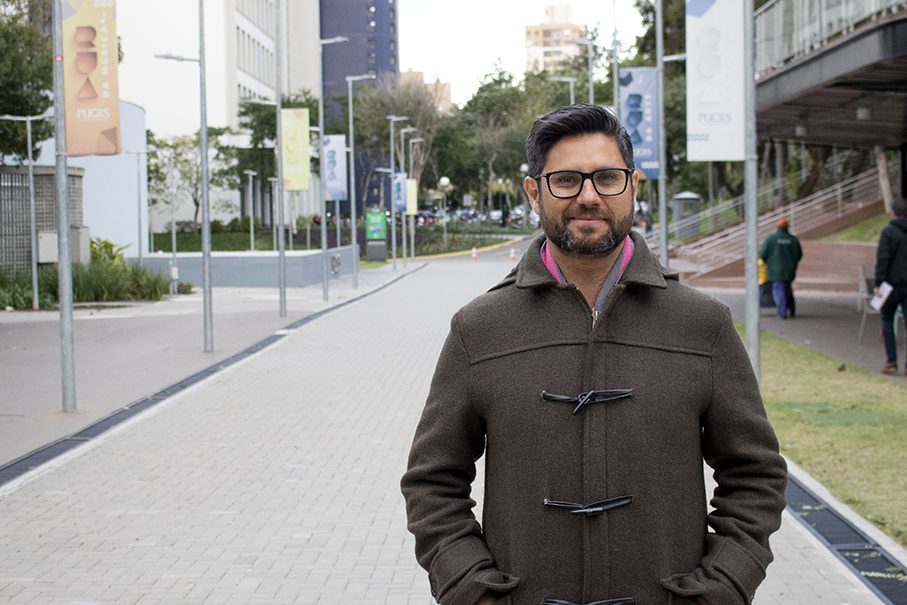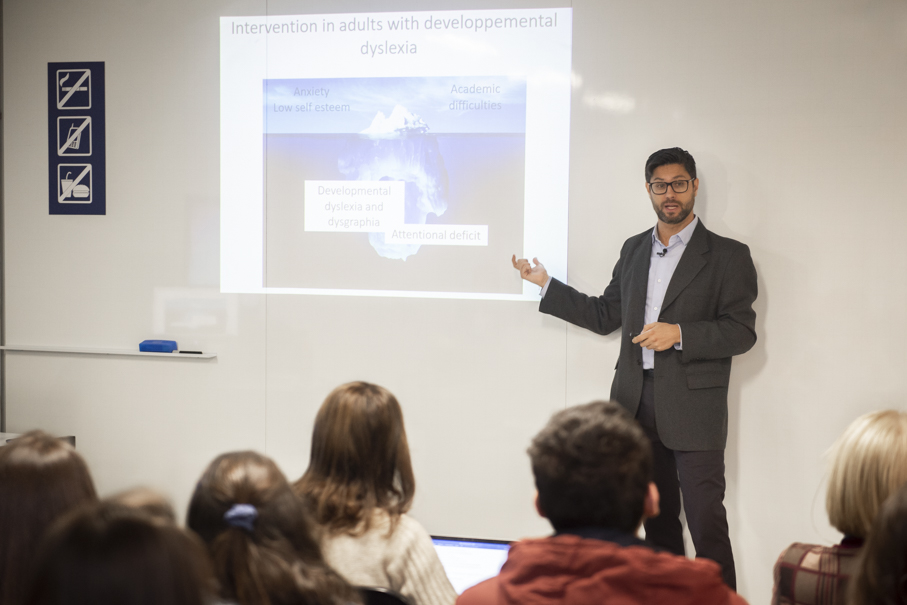Visiting Professor of Université Laval takes part in Psychology activities
Maximiliano Wilson will be staying at PUCRS for a month under PUCRS-PrInt

Photo: Mariana Haupenthal
The Professor of the Université Laval, Canada, Dr Maximiliano Wilson came to PUCRS as a Visiting Professor under PUCRS-PrInt (Call 03 – Visiting Professor in Brazil) early in July. The researcher will be developing activities under the cooperation project Study on neuropsychology of aging and molecular mechanisms related to neurodegenerative diseases in the elderly, coordinated by Professor Carla Schwanke, under the priority theme Health in Human Development.
Since 2015, PUCRS has had a cooperation agreement with the Canadian university and actions, especially in the area of Psychology, have been developed eve since. This partnership has produced a number of studies and joint publications.
During this month at PUCRS, Dr Wilson is making a contribution to the projects developed by the Research Group Clinical and Educational Neuropsychology (GNCE), his area of expertise. He also attended the 89th International Congress Neuropsychological Society (INS), in Rio de Janeiro, along with School of Health Sciences Professor Rochele Paz Fonseca.
In addition to these activities, Professor Wilson will teach, jointly with Dr Fonseca, a course for graduate students, on the analysis of behavioral and cognitive data from specific statistical analyzes. The course will also get students to assess the psychometric aspects of neuropsychological, cognitive and behavioral instruments.
Intervention on morphological awareness

Photo: Camila Cunha
On Jul 15, Professor Maximiliano Wilson delivered the lecture Intervention of morphological awareness to improve reading comprehension of adults with developmental dyslexia. Wilson presented data and evidence on how to develop an intervention on morphological awareness to improve reading comprehension in adults with developmental dyslexia. Morphology is the study and analysis of the smallest significant units of words, instruments into simpler parts to facilitate the analysis of meaning.
In the study, the researcher presented a case study involving 19 college students diagnosed with dyslexia. The study included interventions in 3 face-to-face meetings and 7 hours of homework activities. The study aimed to explain the cognitive mechanisms involved in reading, as well as phonemes, graphemes and the morphology of words. Once students were aware of how word were formed, considerable improvements in reading performance, morphological awareness and reading comprehension have been observed. Wilson drew attention to the efficiency of the method with adults, who are able to understand the morphology of words and make use of such awareness for better reading and comprehension performance.






